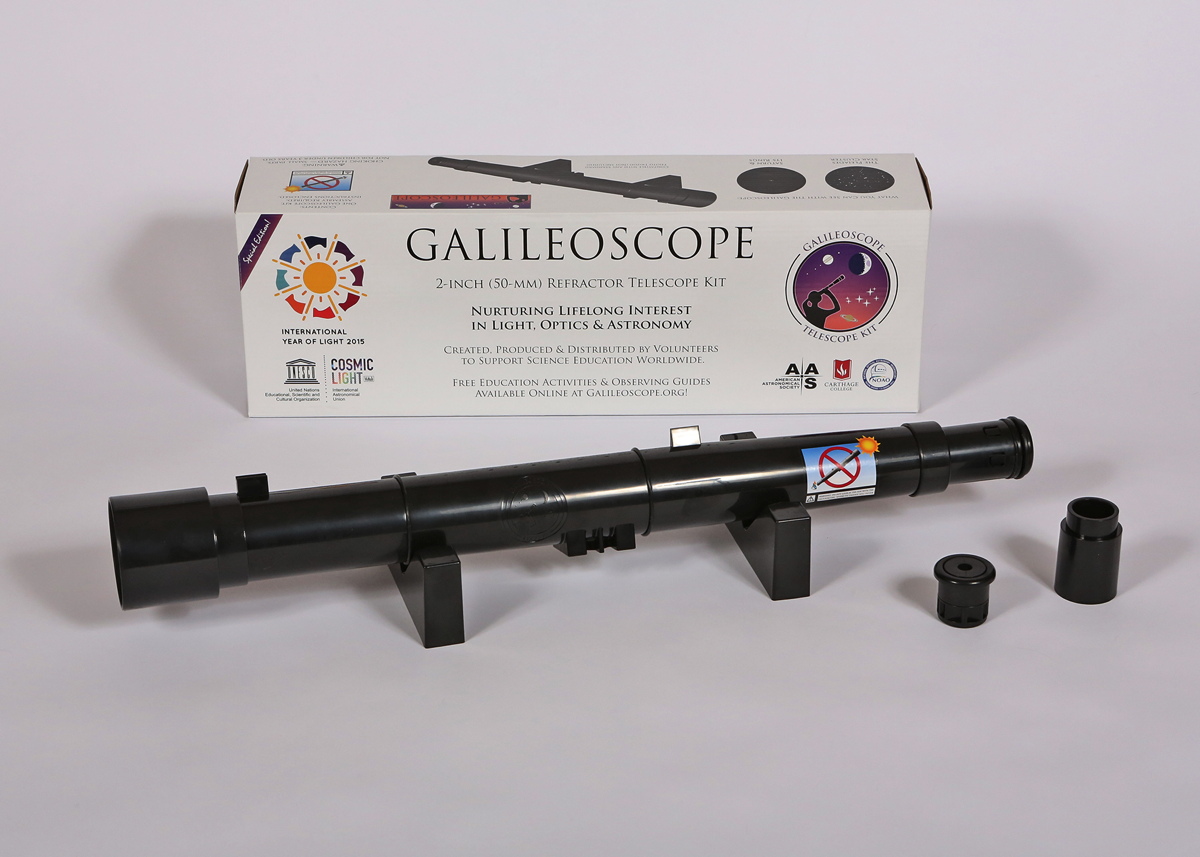'Galileoscope' Brings Low-Cost Starwatching to Kids

A low-cost telescope designed to help students around the world appreciate the wonders of the cosmos is now available in a special edition to celebrate the 2015 International Year of Light.
The makers of the 2-inch-wide (50 millimeters), 25- to 50-power "Galileoscope" — which takes its name from famed Italian astronomer Galileo Galilei — have produced 20,000 special-edition kits in honor of the 2015 International Year of Light (IYL 2015). The United Nations initiative aims to raise awareness and appreciation of the optical sciences.
A case of six Galileoscope kits, regular or special edition, costs $150.
"In the process of assembling the Galileoscope, students explore fundamental optical concepts such as how lenses form images," IYL 2015 officials wrote in a statement.
Once the telescope is assembled, they added, students "enjoy sharp views of lunar craters and mountains, Jupiter's moons, Saturn's rings, the phases of Venus and other bright celestial objects."
The Galileoscope was first created for the 2009 International Year of Astronomy to provide a low-cost but high-quality telescope for audiences who may not have usually had access to astronomy equipment.
Since then, more than 225,000 Galileoscopes have been distributed in 100 countries. IYL 2015 and the International Astronomical Union have declared the Galileoscope a "Cosmic Light cornerstone project" and said they hope to put 100,000 more of the telescopes in use this year.
Breaking space news, the latest updates on rocket launches, skywatching events and more!
"The kit is augmented with free, standards-based optics-education and observing activities, available in multiple languages," officials wrote. "These well-tested activities can be used by classroom and after-school teachers, as well as informal educators, to provide a rigorous approach to teaching science and the process of science."
Organizations that have used Galileoscopes in their training include the U.S. National Optical Astronomy Observatory (NOAO), the Astronomical Society of the Pacific (ASP) and the Galileo Teacher Training Program (GTTP), IYL 2015 officials said.
More information about the Galileoscope is available at http://galileoscope.org.
Follow Elizabeth Howell @howellspace, or Space.com @Spacedotcom. We're also on Facebook and Google+. Originally published on Space.com.
Join our Space Forums to keep talking space on the latest missions, night sky and more! And if you have a news tip, correction or comment, let us know at: community@space.com.

Elizabeth Howell (she/her), Ph.D., was a staff writer in the spaceflight channel between 2022 and 2024 specializing in Canadian space news. She was contributing writer for Space.com for 10 years from 2012 to 2024. Elizabeth's reporting includes multiple exclusives with the White House, leading world coverage about a lost-and-found space tomato on the International Space Station, witnessing five human spaceflight launches on two continents, flying parabolic, working inside a spacesuit, and participating in a simulated Mars mission. Her latest book, "Why Am I Taller?" (ECW Press, 2022) is co-written with astronaut Dave Williams.
